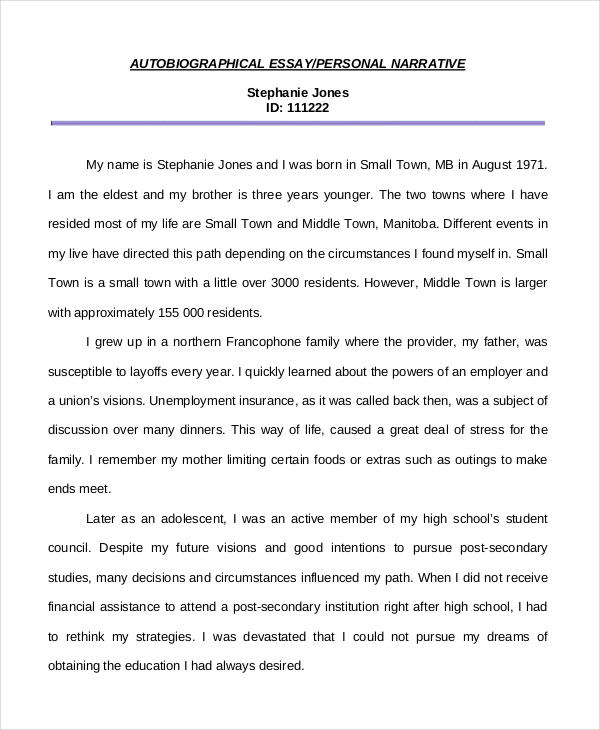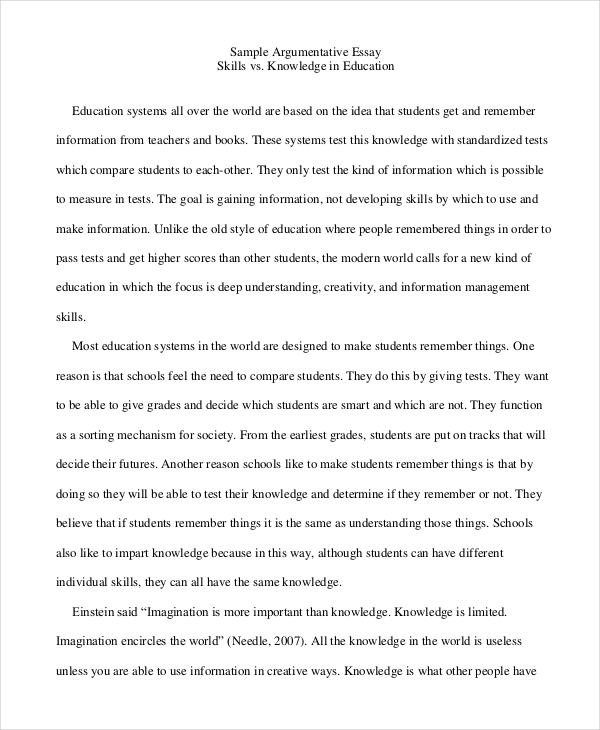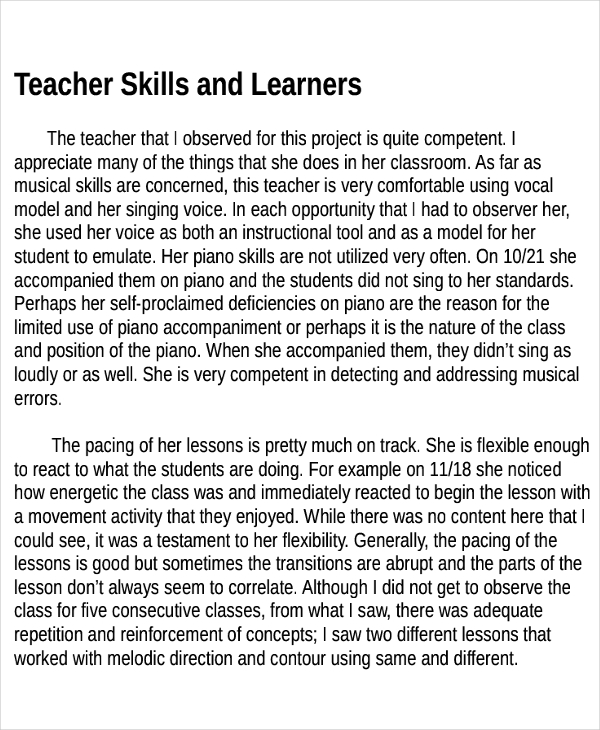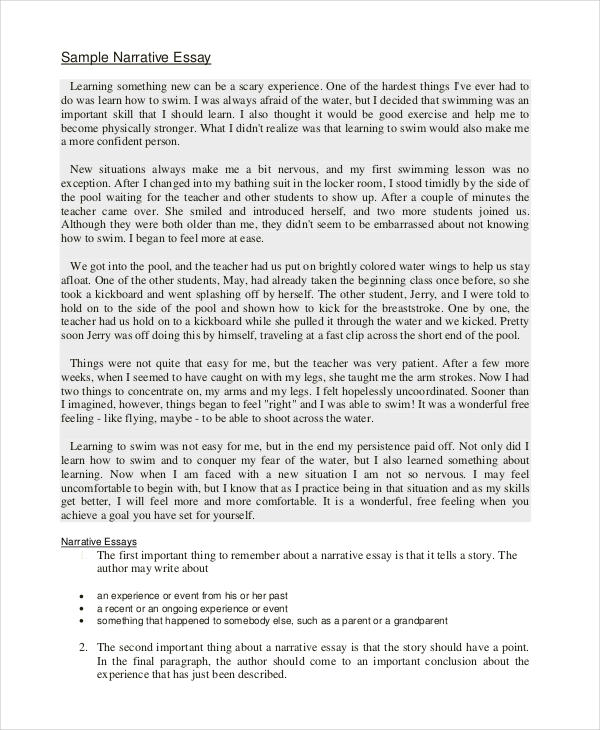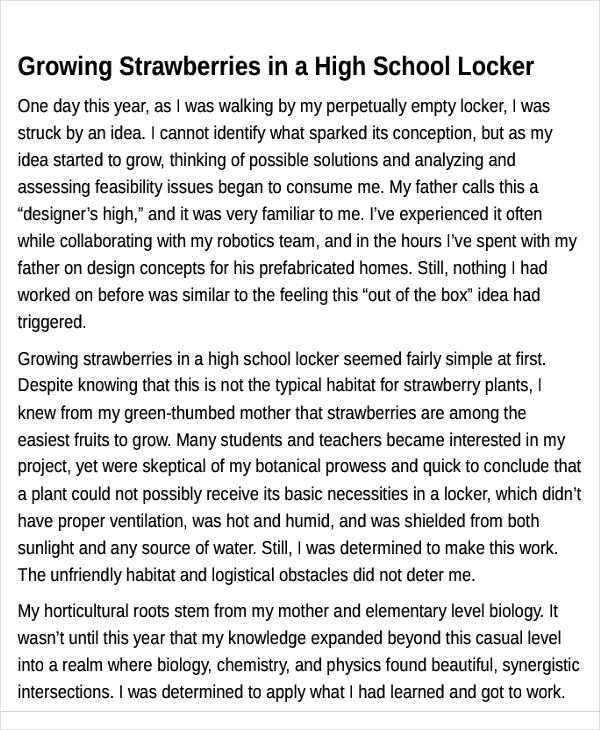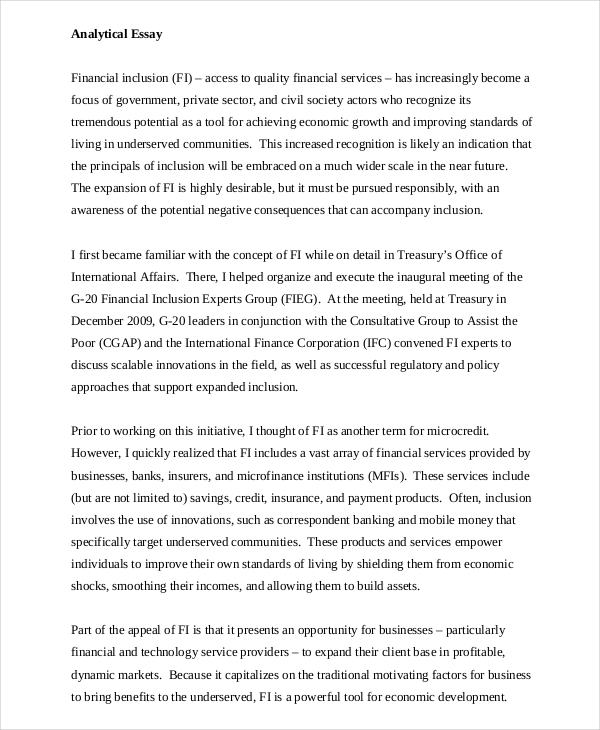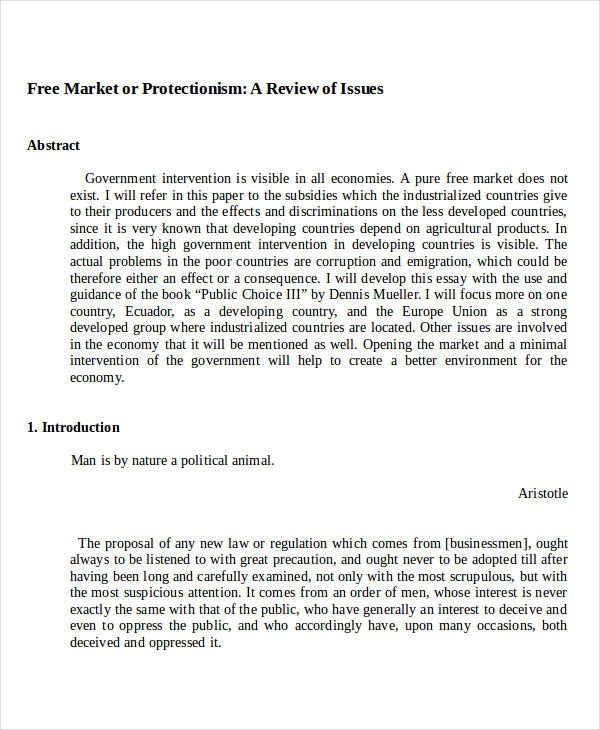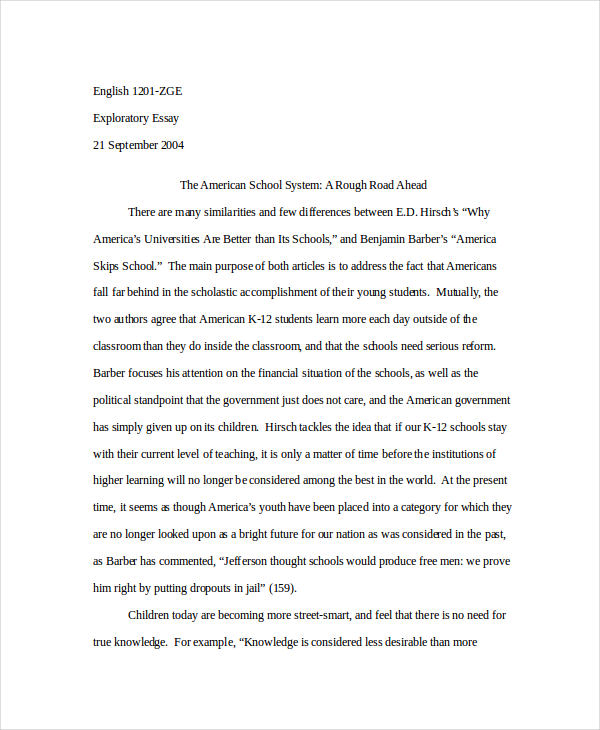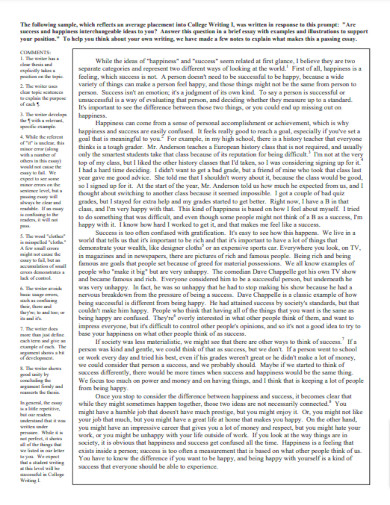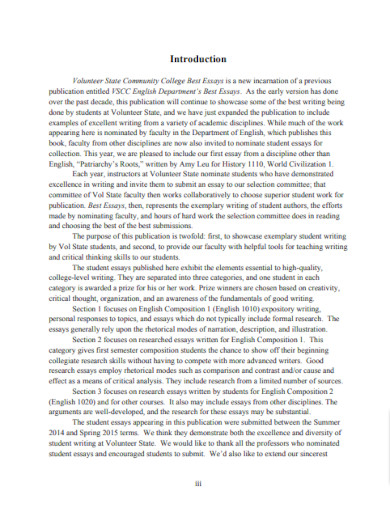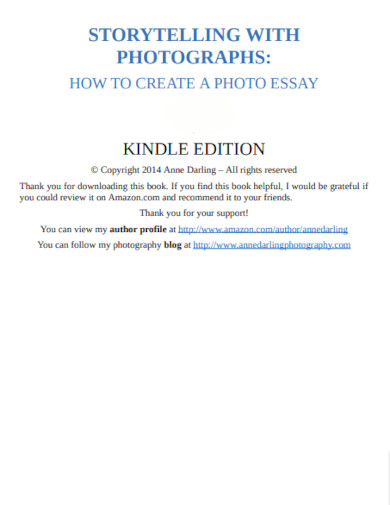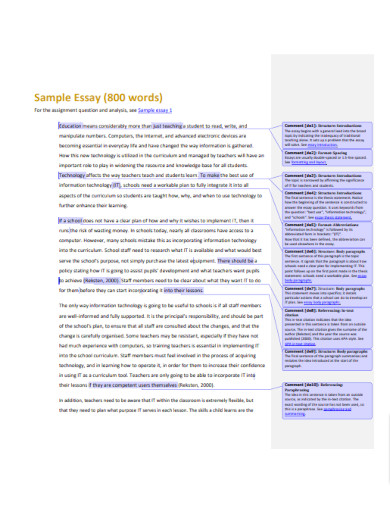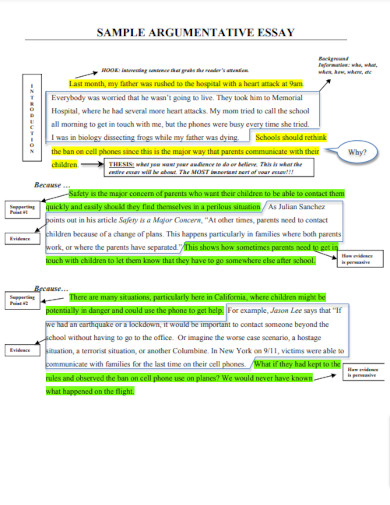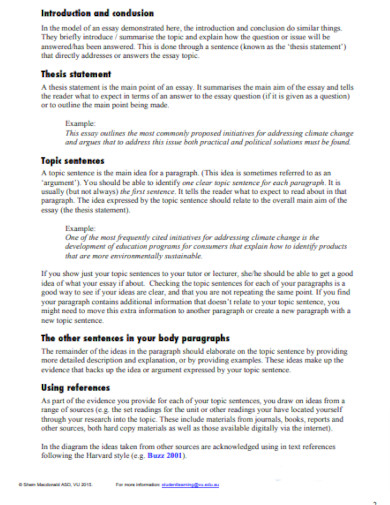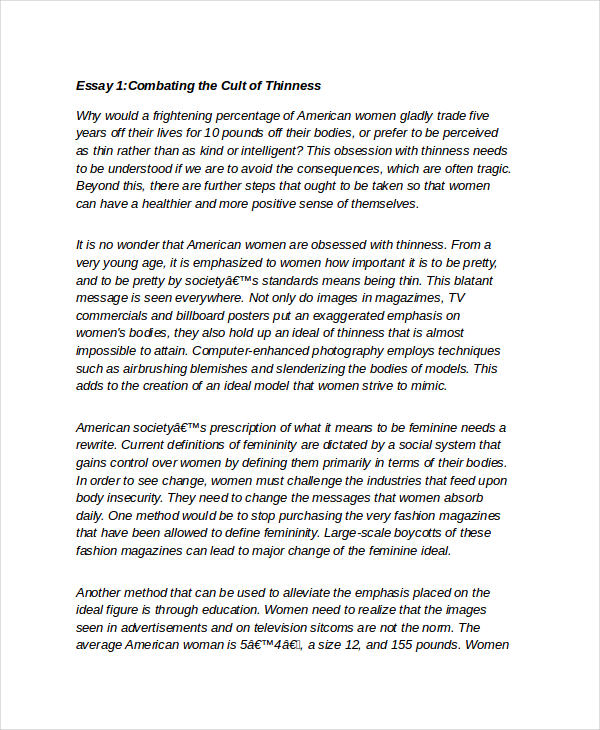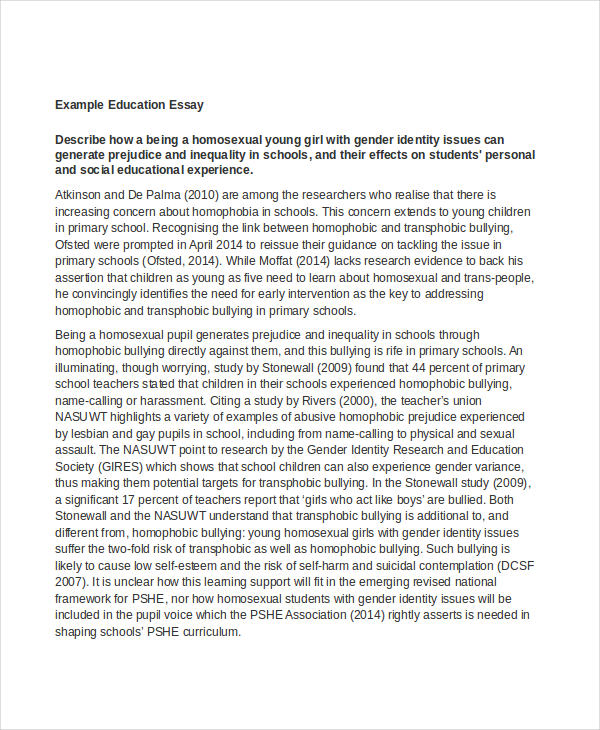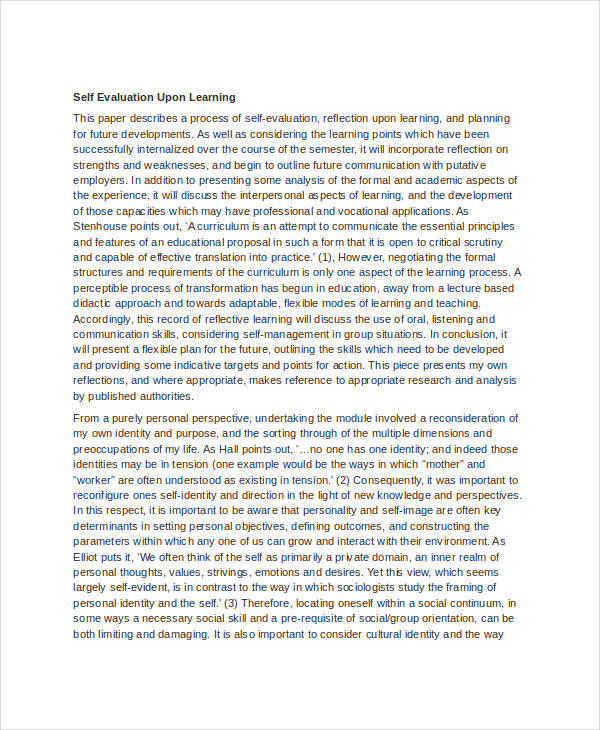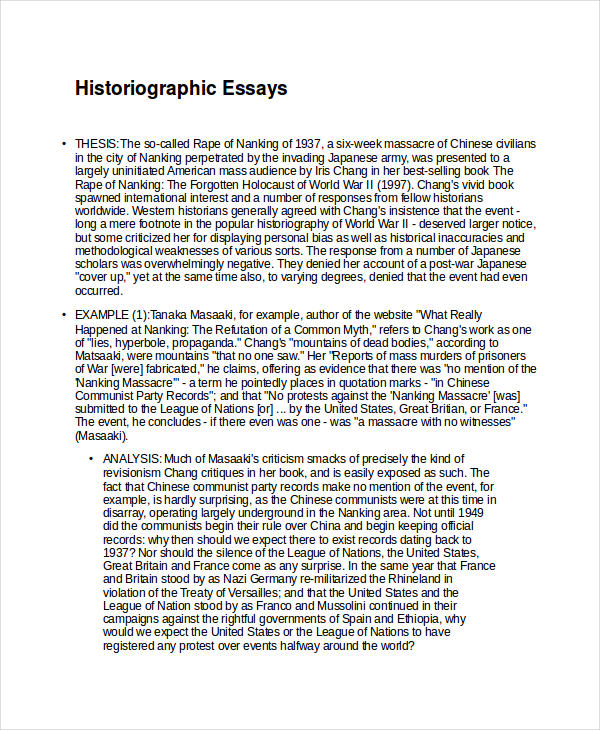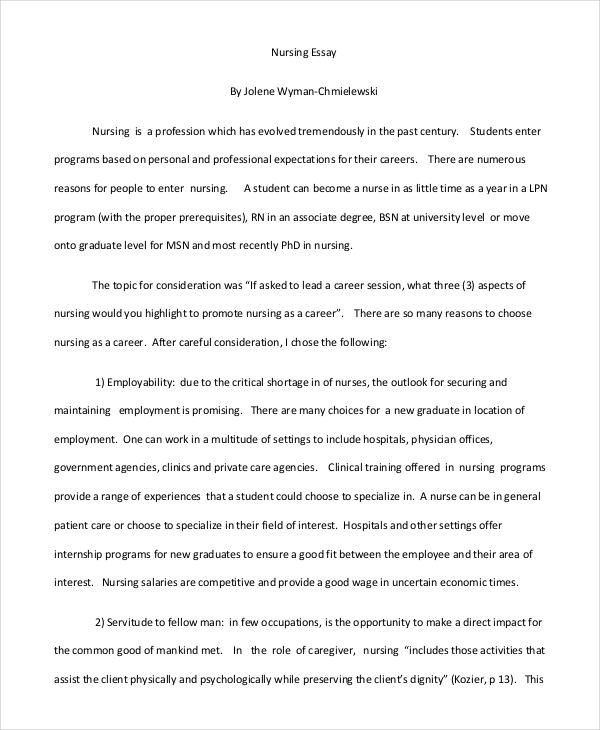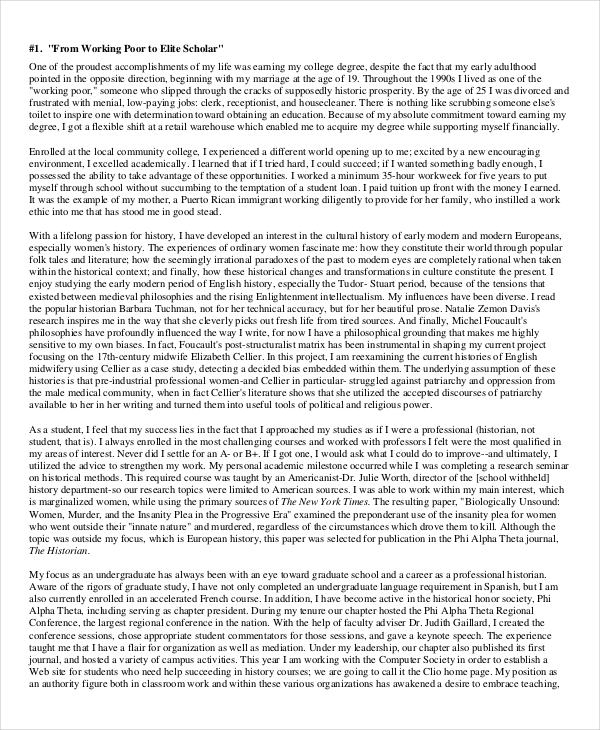70+ Essay Writing Examples to Download
Writing an essay isn’t exactly the most entertaining thing to do with your time. Correct grammar, punctuation, and spelling are essential writing skills to be observed in order to create a good piece. Some may even consider this a dreadful task, spending hours on end just to form something worth reading. In such cases, using essay templates can provide a ready-made structure, allowing you to focus more on content rather than format.
Although for others, it’s as easy as pie. They see it as a hobby or a career path, taking on part-time jobs in freelance writing. However, the ability to write good and effective short essays isn’t a skill you are born with. It is commonly developed through experience and constant practice. Writing a compelling essay requires dedication and refinement over time.
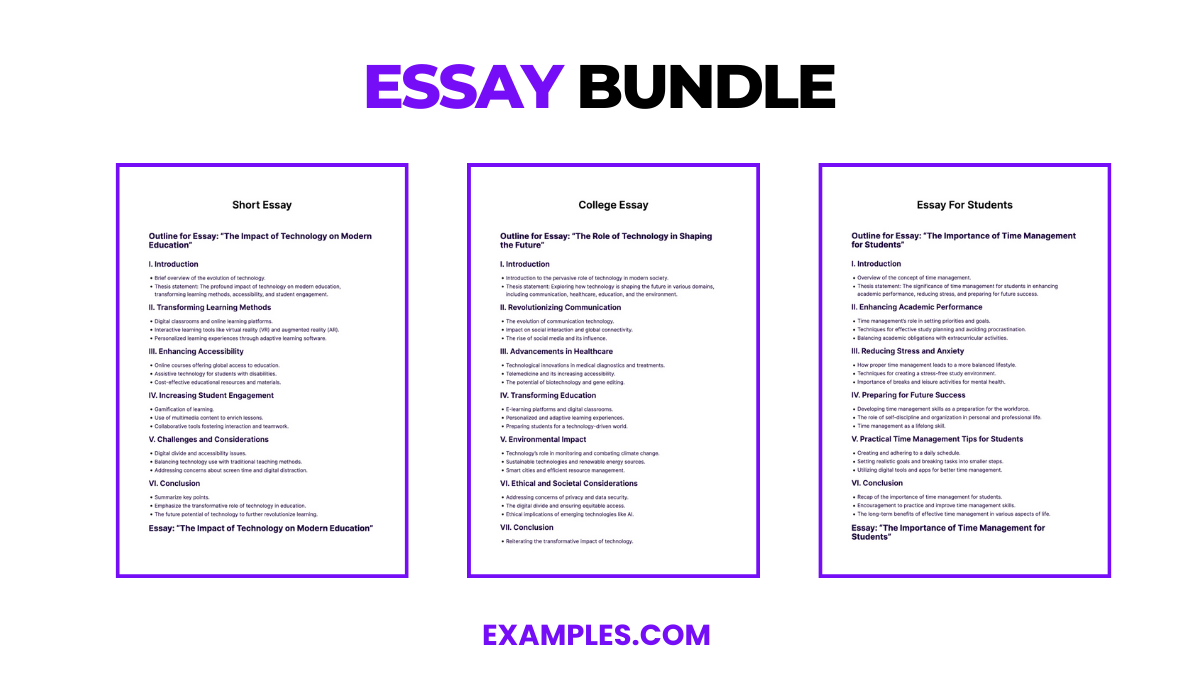
What is Essay Writing?
Essay writing is the process of creating a structured piece of writing that presents ideas, arguments, or reflections on a specific topic. It’s a common form of academic assignment, often used in schools and universities to assess a student’s understanding and expression of various subjects. Essay writing helps students develop critical thinking and writing skills, enabling them to articulate their thoughts and ideas clearly and logically.
Structure/Format of Essay Writing
An essay typically starts with an introduction that introduces the topic and states the main point or thesis. The body, consisting of several paragraphs, each focuses on a specific idea or argument supporting the thesis, with evidence or examples. The essay concludes with a summary that reiterates the main points and restates the thesis, leaving the reader with a final thought. This structure helps organize ideas clearly and logically, making the essay easy to follow and understand.
Introduction
An introduction in essay writing serves as the opening paragraph that introduces the topic, provides context, and outlines the essay’s purpose, setting the stage for the main arguments and thesis statement.
Purpose: Introduces the topic, sets the tone, and presents the thesis statement.
Key Elements: Engaging opening sentence, background information, thesis statement.
Body Paragraphs
A body paragraph is a section that presents a single main idea, supports it with evidence, and elaborates on it to strengthen the essay’s argument and structure.
Purpose: To develop and support the thesis statement.
Structure: Each paragraph should focus on a single main idea or argument.
Key Elements: Topic Sentence, Supporting Details and Analysis
Conclusion
A conclusion in essay writing summarizes key points, restates the thesis, and provides a final perspective, leaving a lasting impression.
Purpose: Summarizes the essay and reinforces the thesis statement.
Key Elements: Summary of Main Points, Restatement of Thesis and Final Thoughts
10 Essay Writing Topics, Ideas with Samples (Copy & Paste)
1. The Impact of Technology on Society
Introduction: Technology has become an integral part of our daily lives, revolutionizing the way we communicate, work, and live. This essay explores the profound impact of technology on society, delving into both the positive advancements and the challenges it presents.
Body:
1. Advancements in Communication: Technology has transformed communication, breaking down geographical barriers and connecting people across the globe. Social media platforms, messaging apps, and video conferencing have revolutionized how we interact, fostering global communities and enabling instant information exchange.
2. Economic Transformation: The rise of the internet and e-commerce has reshaped the business landscape. Online marketplaces, digital payment systems, and automation have streamlined transactions and enhanced efficiency. However, the digital divide remains a concern, with disparities in access and opportunities between different socioeconomic groups.
3. Education and Learning: Technology has revolutionized education, providing access to a vast array of information and online courses. E-learning platforms offer flexible learning opportunities, making education more accessible to diverse learners. However, challenges such as information overload and the need for digital literacy skills persist.
4. Healthcare Innovations: Technological advancements in healthcare have led to improved diagnostics, treatment options, and patient care. Telemedicine facilitates remote consultations, enhancing healthcare accessibility. Artificial intelligence and data analytics have revolutionized medical research and personalized medicine, leading to breakthroughs in various fields.
5. Social Impact and Relationships: The pervasive use of technology has raised concerns about its impact on social relationships. While it facilitates connection, there are worries about the erosion of face-to-face interactions and the rise of online addiction. Balancing digital engagement with meaningful, in-person relationships has become a societal challenge.
Conclusion: In conclusion, technology’s impact on society is multifaceted, bringing both opportunities and challenges. Embracing the benefits of technological advancements while addressing issues such as digital inequality, privacy concerns, and social disconnection is crucial. Society must navigate these complexities thoughtfully to ensure that technology continues to enhance our lives without compromising fundamental human values and connections.
2. Impact of Climate Change on Our Planet
Introduction Climate change, a critical global issue, has far-reaching impacts on our planet. It refers to significant changes in global temperatures and weather patterns over time. While climate has changed throughout Earth’s history, recent decades have seen unprecedented changes, largely attributed to human activities. This essay explores the impact of climate change on various aspects of our planet, including natural ecosystems, weather patterns, human health, and economic sectors.
Impact on Natural Ecosystems One of the most visible impacts of climate change is on natural ecosystems. Rising temperatures and changing precipitation patterns are altering habitats globally. For instance, coral reefs, known as the rainforests of the sea, are experiencing widespread bleaching due to warmer oceans. Similarly, polar regions are facing melting ice, endangering species like polar bears and penguins. Forests are not immune either; increased temperatures and droughts lead to more frequent and intense wildfires, destroying vast areas and biodiversity.
Weather Patterns and Extreme Events Climate change has significantly altered weather patterns, leading to more extreme and unpredictable weather events. The frequency and severity of droughts, heatwaves, hurricanes, and floods have increased. For example, hurricanes are becoming more intense due to warmer ocean waters, and rising sea levels are exacerbating coastal flooding. These extreme events not only cause immediate destruction but also long-term economic and social challenges.
Human Health Concerns The impact of climate change on human health is increasingly evident. Higher temperatures contribute to heat-related illnesses and deaths. Changes in weather patterns also affect air quality, leading to respiratory issues. Furthermore, the spread of vector-borne diseases, such as malaria and dengue fever, is expected to increase as the climate warms, posing new health risks in regions previously unaffected.
Economic and Social Impacts Economically, climate change affects various sectors, including agriculture, fisheries, and tourism. Changes in temperature and precipitation patterns disrupt food production, leading to food insecurity. Fisheries are impacted by ocean acidification and changing marine ecosystems, affecting livelihoods and food supplies. Additionally, tourism in areas like coastal regions and mountain ski resorts faces challenges due to changing climate conditions.
Conclusion The impact of climate change on our planet is profound and multifaceted, affecting natural ecosystems, weather patterns, human health, and economic sectors. It is a global challenge that requires immediate and concerted efforts to mitigate and adapt to its effects. Addressing climate change involves reducing greenhouse gas emissions, preserving and restoring ecosystems, and developing sustainable practices. The time to act is now, to protect our planet for future generations.
3. Mental Health Awareness Among Youth
Mental health is a crucial aspect of overall well-being, especially among youth. It’s a pivotal period in life when individuals undergo significant physical, emotional, and social changes. Understanding and addressing mental health issues during these formative years are essential for fostering a healthy and productive society.
Identifying Mental Health Issues in Youth
Mental health issues can manifest in various ways, such as anxiety, depression, eating disorders, and behavioral problems. Often, these issues are misinterpreted as typical adolescent behavior, leading to a lack of proper intervention. Early identification of mental health issues is key to providing timely support and care.
Signs of Mental Health Issues
- Changes in mood or behavior
- Withdrawal from social interactions
- Declining academic performance
- Changes in sleeping or eating patterns
- Expressions of hopelessness or worthlessness
The Stigma Surrounding Mental Health
One of the biggest challenges in addressing mental health among youth is the stigma associated with it. This stigma often leads to reluctance in seeking help and discussing mental health issues openly.
Effects of Stigma
- Hesitation to seek help
- Lack of understanding from peers and adults
- Worsening of mental health conditions
Creating a Supportive Environment
Creating a supportive and understanding environment is vital in encouraging youth to speak about and seek help for their mental health issues.
Strategies for Support
- Educating teachers and parents about mental health
- Implementing mental health programs in schools
- Providing access to counseling and psychological services
- Encouraging peer support groups
The Role of Technology and Social Media
In today’s digital age, technology and social media play a significant role in youths’ lives, impacting their mental health both positively and negatively.
Impact of Digital Media:
- Social media can lead to issues like cyberbullying and unrealistic body image expectations.
- Technology can also be a tool for spreading awareness and providing access to resources.
Conclusion
Mental health awareness among youth is not just a necessity but an imperative for building a resilient, empathetic, and healthy society. Through education, support, and open conversations, we can empower our youth to face life’s challenges with strength and optimism. Creating an environment where mental health is prioritized and discussed openly will pave the way for a more understanding and supportive community, ensuring a brighter future for all.
4. Artificial Intelligence: Boon or Bane?
Introduction: In the realm of technology, artificial intelligence (AI) stands as a monumental innovation, reshaping how we live, work, and interact. But as with any significant technological advancement, AI’s impact on society sparks a crucial debate: Is it a boon or a bane? This essay delves into the multifaceted nature of AI, examining its benefits and challenges, ultimately aiming to provide a balanced perspective.
The Boon of AI
- Enhancement of Efficiency and Productivity AI systems excel in processing vast amounts of data rapidly, significantly outpacing human capabilities. This trait has transformed industries by streamlining operations, from manufacturing with automated robotics to healthcare where AI aids in diagnosis and treatment planning.
- Innovation in Various Fields AI fosters innovation across diverse sectors. In education, personalized learning algorithms adapt to individual student needs, enhancing the learning experience. In environmental science, AI assists in climate modeling and conservation efforts, contributing to a more sustainable future.
- Improvement in Quality of Life AI’s impact on daily life is profound. Smart home devices offer convenience and enhanced security, while AI-driven personal assistants, like voice-activated systems, simplify tasks. Moreover, AI’s role in healthcare, from robotic surgeries to predictive diagnostics, has been life-altering for many.
The Bane of AI
- Job Displacement Concerns One of the most significant fears surrounding AI is job displacement. Automation and AI systems could replace human roles, particularly in sectors like manufacturing and customer service, leading to unemployment and economic disparities.
- Ethical and Privacy Issues AI’s ability to analyze personal data raises privacy concerns. Issues like data misuse and surveillance have prompted debates on ethical guidelines and regulations. Furthermore, AI’s decision-making processes, if not transparent, can lead to ethical dilemmas in areas like law enforcement and lending.
- Dependency and Reduced Human Skill An over-reliance on AI could lead to a decline in critical human skills. For instance, excessive use of navigational AI may impair our natural sense of direction, and dependence on AI for decision-making could diminish our problem-solving abilities.
Conclusion: AI, like any powerful tool, comes with its set of pros and cons. While it offers remarkable advancements and efficiencies, it also presents significant challenges and risks. The key lies in harnessing AI’s potential responsibly, with mindful consideration of ethical implications and a balanced approach to technology integration. By doing so, we can steer AI towards being more of a boon than a bane, ensuring it serves to enhance, rather than dictate, the course of human progress.
5. Sustainable Living and Environmental Conservation
Introduction
Sustainable Living and Environmental Conservation are vital concepts in today’s world, as they focus on maintaining the health of our planet for future generations. This essay explores the importance of sustainable living and the various ways in which individuals and communities can contribute to environmental conservation.
Understanding Sustainable Living
Sustainable living refers to a lifestyle that attempts to reduce an individual’s or society’s use of the Earth’s natural resources. This practice advocates for:
- Reducing Carbon Footprint: Limiting activities that contribute to carbon emissions, such as excessive use of fossil fuels.
- Conserving Water: Implementing water-saving techniques like rainwater harvesting and fixing leaks.
- Minimizing Waste: Promoting recycling, composting, and the reduction of single-use plastics.
Environmental Conservation: A Global Priority
Environmental conservation involves protecting and preserving the natural world. Its significance lies in:
- Biodiversity Protection: Ensuring the survival of diverse species and ecosystems.
- Climate Change Mitigation: Addressing global warming through sustainable practices.
- Resource Preservation: Ensuring that natural resources are available for future generations.
Implementing Sustainable Practices
Adopting sustainable habits can have a profound impact. Key practices include:
- Energy Efficiency: Using energy-saving appliances and LED lighting.
- Sustainable Transportation: Favoring walking, cycling, and public transport over individual car use.
- Eco-Friendly Products: Choosing products with minimal environmental impact, like biodegradable packaging.
Community and Global Efforts
Beyond individual actions, larger scale efforts are crucial:
- Government Policies: Implementing regulations that promote sustainability, like renewable energy incentives.
- Corporate Responsibility: Encouraging businesses to adopt sustainable practices in their operations.
- Educational Initiatives: Raising awareness about environmental issues through education and community programs.
Challenges and Future Perspectives
While the journey towards sustainability presents challenges such as economic constraints and resistance to change, the future looks promising with technological advancements and increasing global awareness. It’s essential that:
- Innovation Continues: Developing new technologies for renewable energy and sustainable agriculture.
- Collaborative Efforts Increase: Fostering partnerships between governments, businesses, and communities.
- Sustainable Values Are Cultivated: Encouraging a cultural shift towards valuing and protecting our environment.
Conclusion
Sustainable living and environmental conservation are not just choices, but necessities for the health and survival of our planet. It’s a collective responsibility that requires the participation of individuals, communities, and nations. By embracing sustainable practices and advocating for environmental conservation, we can ensure a healthier, more equitable, and sustainable world for future generations.
6. The Influence of Social Media on Teenagers
In the digital age, social media has become a pivotal aspect of teenagers’ lives. Its impact is profound and multifaceted, influencing various aspects of their social, emotional, and educational development. This essay explores the positive and negative effects of social media on teenagers and suggests ways to mitigate its adverse impacts.
Positive Impacts of Social Media
1. Connectivity and Socialization: Social media platforms like Facebook, Instagram, and Snapchat offer teenagers a space to connect with friends and family, fostering a sense of belonging and community. They can interact with peers from different parts of the world, learn about diverse cultures, and form new friendships.
2. Educational Resources: Platforms such as YouTube and educational blogs provide an abundance of learning materials. Teenagers can access tutorials, e-books, and online courses, aiding their academic growth and supplementing their school education.
3. Self-Expression and Creativity: Social media is a canvas for self-expression. Teenagers can share their thoughts, artwork, and achievements, receiving encouragement and feedback. This boosts their confidence and nurtures their creative talents.
Negative Impacts of Social Media
1. Cyberbullying and Peer Pressure: The anonymity and distance provided by social media can lead to cyberbullying. Teens often face pressure to conform to certain trends or behaviors, affecting their mental health and self-esteem.
2. Distraction and Academic Decline: Excessive use of social media can become a major distraction, leading to reduced concentration and a decline in academic performance. The constant need to check notifications disrupts study routines and hinders productivity.
3. Mental Health Issues: Studies have linked prolonged social media use to mental health issues like anxiety, depression, and loneliness in teenagers. The pressure to maintain a certain image and the fear of missing out (FOMO) can be overwhelming.
Mitigating the Negative Impacts
1. Educating on Digital Literacy: Schools and parents should educate teenagers about responsible social media usage. Understanding digital footprints, privacy settings, and the importance of online etiquette is crucial.
2. Encouraging Offline Interactions: Promoting real-life interactions and activities can balance online engagement. Participating in sports, clubs, and family activities helps develop social skills away from the digital world.
3. Setting Boundaries: Implementing rules on the amount of time spent on social media can be effective. Encouraging designated ‘tech-free’ times during meals or before bed can help in establishing healthy habits.
Conclusion
Social media’s influence on teenagers is undeniable. While it offers significant benefits in terms of connectivity, learning, and self-expression, the risks associated with cyberbullying, distraction, and mental health cannot be overlooked. By educating teenagers about the responsible use of social media and encouraging a balanced lifestyle, the negative impacts can be mitigated, harnessing its positive potential for their holistic development.
7. Equality and Diversity in the 21st Century
In the 21st century, the concepts of equality and diversity have evolved significantly, reflecting a world that is increasingly interconnected and diverse. This essay explores the importance of equality and diversity, their impact on society, and the challenges and opportunities they present in today’s global landscape.
The Importance of Equality and Diversity
Equality and diversity are foundational to a just and vibrant society. Equality ensures that every individual has an equal opportunity to make the most of their lives and talents. It is not only about treating individuals in the same way but also about recognizing and valuing differences to contribute and realize their full potential. Diversity, on the other hand, refers to the range of human differences, including but not limited to race, ethnicity, gender, gender identity, sexual orientation, age, social class, physical ability or attributes, religious or ethical values system, and national origin. Embracing diversity means understanding, accepting, and valuing differences between people.
Impact on Society
The synergy of equality and diversity has a profound impact on society. It fosters innovation and creativity by bringing together a wide range of perspectives and experiences. Organizations and societies that embrace diversity and equality tend to be more dynamic, creative, and successful. In education, a diverse and inclusive environment encourages critical thinking and exposes students to a broader range of perspectives, preparing them for global citizenship.
Challenges and Opportunities
Despite the clear benefits, achieving equality and diversity in the 21st century comes with challenges. Discrimination and inequality persist in many forms and settings. Stereotyping and prejudice can lead to exclusion and marginalization of certain groups. However, these challenges present opportunities. There is a growing awareness and activism around issues of inequality and discrimination. Technology and globalization have given rise to new platforms for voices advocating for change and equality.
Role of Education and Policy
Education plays a critical role in fostering equality and diversity. Curricula that incorporate diverse perspectives and histories can promote understanding and respect for differences. Policy-making also has a significant impact. Laws and regulations that promote equality, prevent discrimination, and protect the rights of minorities are essential for a fair society.
Conclusion
In conclusion, equality and diversity are not just ideals to be aspired to; they are essential components of a healthy, dynamic, and just society. The challenges in achieving these are substantial, but the opportunities they present are transformative. By embracing these principles, societies can build a foundation for a more inclusive, innovative, and equitable world.
8. The Future of Work Post-Pandemic
Introduction
The COVID-19 pandemic has irreversibly transformed the landscape of work. As we transition into the post-pandemic era, it is vital to explore how these changes will continue to influence the workplace. This essay examines the emerging trends and potential future of work, considering the shifts in work culture, technology, and employee expectations.
Shift to Remote and Hybrid Models
One of the most significant changes is the widespread adoption of remote and hybrid work models. Companies have realized that many jobs can be done effectively from home, leading to a reevaluation of the need for physical office spaces. This shift has benefits such as reduced commute times and greater flexibility, enhancing work-life balance for employees.
- Increased Remote Opportunities: Companies are now more open to hiring remote employees, broadening the talent pool.
- Hybrid Work Environments: A blend of in-office and remote work is becoming the norm, offering flexibility and maintaining team collaboration.
Technological Advancements
The pandemic has accelerated the adoption of technology in the workplace. From virtual meetings to cloud-based collaboration tools, technology is at the forefront of this new work era.
- Collaboration Tools: Platforms like Zoom, Slack, and Microsoft Teams have become indispensable for remote teamwork.
- Artificial Intelligence and Automation: These technologies are streamlining processes and improving efficiency, but also raising questions about job security and skill requirements.
Changing Employee Expectations
Employees’ priorities and expectations have evolved, leading to a shift in workplace dynamics.
- Emphasis on Well-being: Workers are now more focused on mental health and work-life balance.
- Desire for Meaningful Work: There is a growing trend towards seeking work that is fulfilling and aligns with personal values.
Challenges and Opportunities
This new era of work is not without its challenges. Issues such as digital inequality, maintaining company culture, and managing remote teams effectively are at the forefront. However, these challenges also present opportunities for innovation and growth.
- Inclusive and Diverse Workplaces: Remote work allows for a more diverse workforce, but it requires deliberate efforts to ensure inclusivity.
- Sustainable Practices: The reduction in commuting and office usage can contribute to environmental sustainability.
Conclusion
The post-pandemic future of work is characterized by flexibility, technological integration, and a new set of employee expectations. While navigating this landscape presents challenges, it also offers opportunities for creating more inclusive, efficient, and fulfilling work environments. As we move forward, it is crucial for both employers and employees to adapt and embrace these changes to thrive in the evolving world of work.
9. Space Exploration and Its Importance
Space exploration, a journey into the unknown, the endless cosmos, holds a significant place in the advancement of human knowledge and technology. Over the years, exploring space has not only fueled our imagination but also brought about groundbreaking discoveries and innovations. This essay delves into the importance of space exploration, highlighting its impact on science, technology, and humanity.
Unlocking the Mysteries of the Universe
Space exploration allows us to understand the cosmos beyond our planet. Through missions like the Hubble Space Telescope and the Mars rovers, we have gained invaluable insights into the formation of galaxies, the lifecycle of stars, and the possibility of life on other planets. These discoveries not only satisfy our natural curiosity but also enhance our understanding of Earth’s place in the universe.
Advancing Scientific Knowledge and Innovation
The pursuit of space exploration has led to significant technological advancements. Innovations developed for space missions often find applications on Earth. For instance, satellite technology, essential for GPS and weather forecasting, was born out of space research. Similarly, advancements in materials science, robotics, and computer technology can all trace their roots back to space exploration.
Inspiring Future Generations
Space exploration stands as a testament to human ingenuity and perseverance. It inspires young minds to pursue careers in science, technology, engineering, and mathematics (STEM). The achievements of astronauts and the allure of exploring the unknown ignite the imagination of students, encouraging them to dream big and push the boundaries of what is possible.
Fostering International Collaboration
Space missions often require global cooperation, uniting countries in a common goal. International space stations and joint missions demonstrate how collaboration can transcend geopolitical boundaries, fostering peace and mutual understanding among nations. This cooperation in space exploration serves as a model for addressing other global challenges.
Preparing for Future Challenges
Understanding celestial phenomena like asteroids and solar flares is crucial for protecting Earth. Space exploration equips us with the knowledge and tools to predict and mitigate potential threats from space. Moreover, exploring celestial bodies like Mars or the Moon could pave the way for future colonization, ensuring the long-term survival of humanity.
Economic Benefits
Investing in space exploration has significant economic returns. It stimulates industries related to aerospace, engineering, and research, creating jobs and boosting economic growth. The technology developed often leads to new products and services, further enhancing economic development.
Conclusion
Space exploration is not just about reaching new frontiers but about the benefits it brings to life on Earth. It enriches our understanding of the universe, drives technological innovation, inspires future generations, fosters international cooperation, prepares us for future challenges, and stimulates economic growth. The journey into space, therefore, is not an optional pursuit but a necessary endeavor for the advancement and well-being of humanity.
10. Cultural Heritage and Its Preservation
Cultural heritage encompasses the traditions, values, and historical sites that are inherited from past generations. It is a reflection of a community’s identity and plays a crucial role in shaping the future. This essay explores the significance of cultural heritage and the importance of its preservation.
The Essence of Cultural Heritage
Cultural heritage is not just about historical artifacts and monuments. It includes intangible aspects like folklore, music, language, and rituals. These elements provide a sense of belonging and continuity in a rapidly changing world. For instance, traditional festivals and ceremonies are more than just events; they are the carriers of stories, beliefs, and customs.
Threats to Cultural Heritage
Cultural heritage faces numerous threats, including urbanization, environmental degradation, and globalization. Urban development often leads to the destruction of historical sites. Pollution can damage irreplaceable artifacts, and the global spread of a uniform culture threatens the uniqueness of local customs and traditions. Conflict and war also pose significant risks to cultural heritage, as seen in the destruction of historical sites in various parts of the world.
Importance of Preservation
Preserving cultural heritage is essential for maintaining community identity and fostering an understanding of our history. It aids in the retention of cultural diversity in a globalized world. For example, preserving indigenous languages helps maintain unique worldviews and knowledge systems.
Methods of Preservation
Digital Preservation: Technological advancements enable the digital preservation of cultural artifacts. Digitizing documents, artworks, and music ensures their longevity and accessibility to future generations.
Legal Protections: Implementing laws to protect cultural heritage sites and practices is crucial. These laws can prevent unauthorized alterations to historical sites and safeguard intangible cultural elements.
Community Engagement: Involving local communities in preservation efforts ensures that practices and sites are maintained in a culturally respectful and sustainable manner.
Education and Awareness: Educating the public about the value of cultural heritage can foster a sense of responsibility towards preservation. School curricula that include local history and cultural studies can inspire younger generations to appreciate and preserve their cultural heritage.
Conclusion
Cultural heritage is a vital link to our past and a gift to our future. Its preservation requires collaborative efforts between governments, communities, and individuals. By valuing and protecting our cultural heritage, we ensure that the richness of our past continues to enlighten our present and guide our future.
More Ideas & Topics
20 + Essay Writing Examples [Edit & Download]
Short Essay Example

College Essay
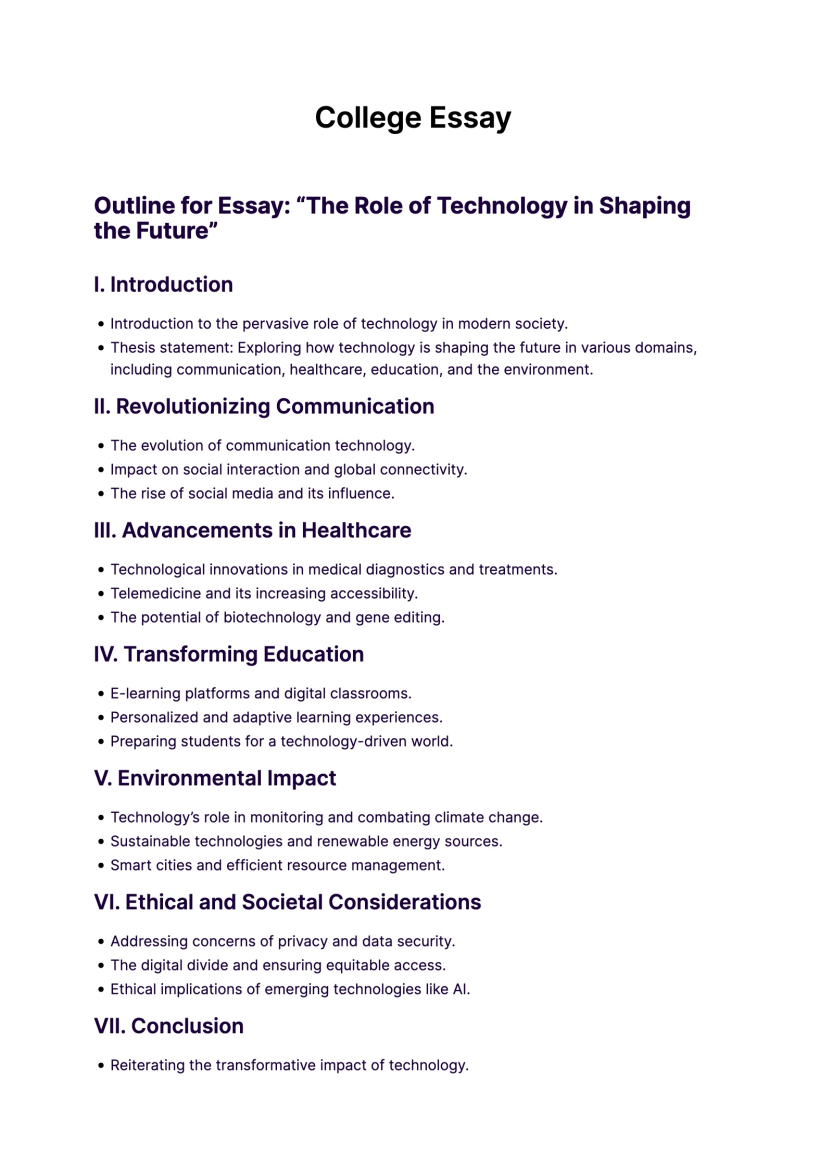
Essay For Students
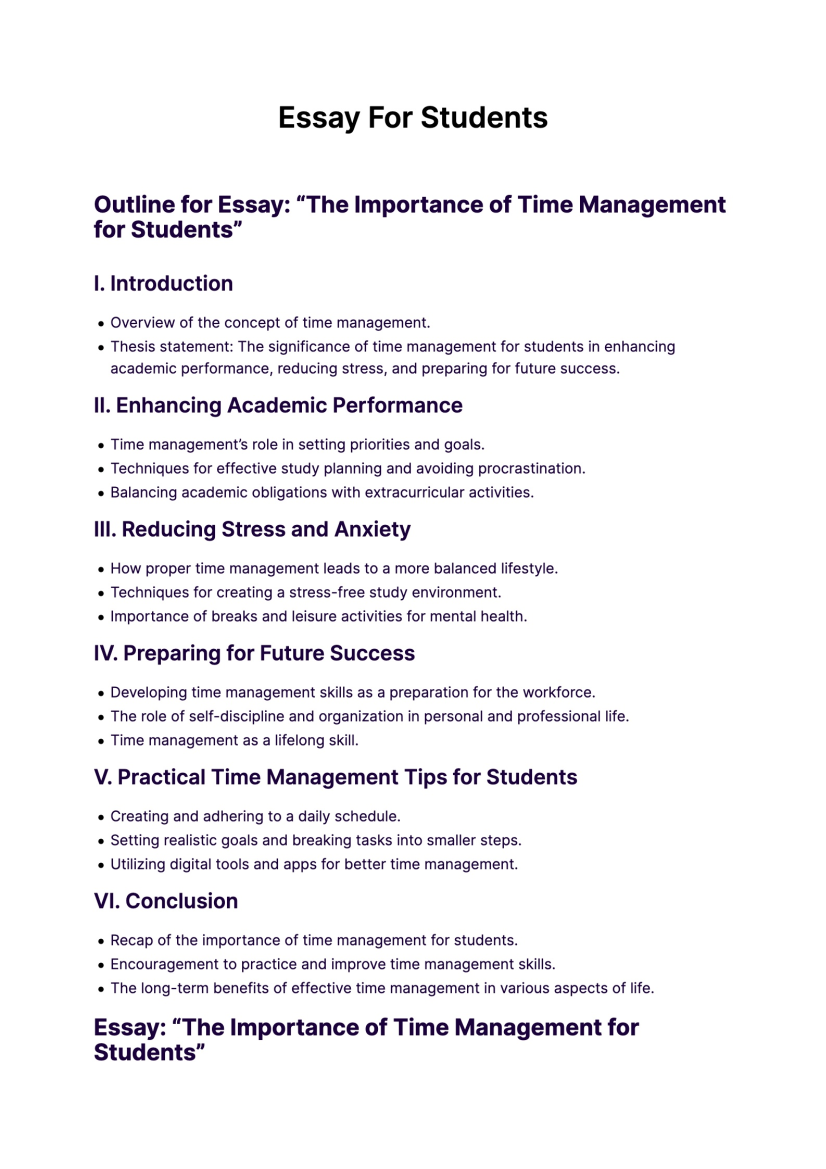
Sample Illustration
Reflective Essay
Autobiography Example
Sample Descriptive
Free Argumentative
Observation Essay
Free Response Sample
Narrative Essay
Free Service Example
Free Personal
Analytical Essay
Free Comparative Example
Dialogue Essay
Free Economics Sample
Free Expository
Exploratory Example
Informative Essay
More Essay Templates in PDF, DOC
1. Argumentative Essay Writing Example
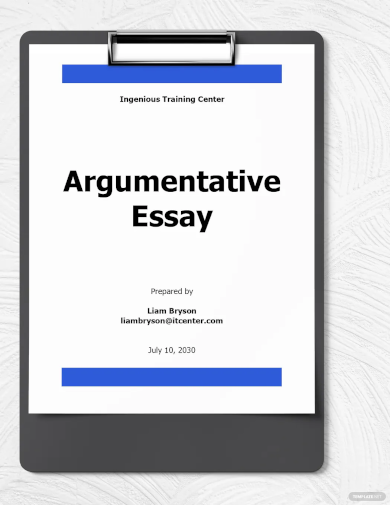
2. 5-Paragraph Essay Writing Example

3. Character Analysis Writing Essay Outline

4. Free Essay Writing Plan Example
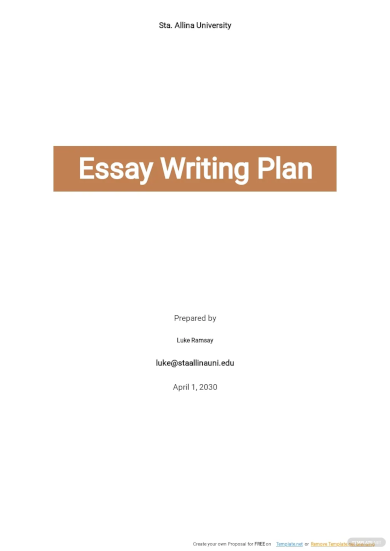
5. Argumentative Essay Writing Middle School

6. Example of Essay Writing Format
7. Composition Essay Writing Example
8. Photo Essay Writing Example
9. Essay Writing Example For Students
10. Argumentative Essay Writing Example
11. Academic Essay Writing Example
12. Advanced Essay Writing Example
13. Critical Essay Writing Example
14. Descriptive Essay Sample Example
15. Education Essay Writing Example
16. Self-Evaluation Essay Example
17. Leadership and Profile Essay Writing
18. Histographic Narrative Essay Sample Example
19. Nursing Essay Writing Example
20. Persuasive Application Essay Example
21. Short Personal Writing Example
22. Sample Vacation Writing Example
What Is an Essay Outline?
An essay outline is a collection of thoughts and ideas relevant to the subject matter. It serves as a guide for writers to properly organize their thoughts into paragraphs. Writing templates are quite useful for essays with topics that are unfamiliar to the writer. It also allows the writer to properly reorganize points and research further on unclear statements. This will make it easier for the writer to emphasize important points properly.
What to Include in a Creative Essay
Creative essay writing is simply freestyle writing. It’s about being open-minded and imaginative with your thoughts. There are no exact rules being set but instead, it takes on a more narrative writing approach to the standard essay writing. It is an informal type of essay writing as opposed to those of formal writing examples, such as in argumentative college application examples, in essay writing. Creative essays must have a topic. It may be about personal experiences or fictional beliefs. Make sure that the essay has a purpose, to either inform or entertain readers with interesting details. Although this isn’t the standard way of writing, it’s still important to emphasize the point of your essay.
Types of Essay Writing
- Narrative Essay: Tells a story, often personal, with a central theme or point.
- Descriptive Essay: Paints a picture using detailed observations and descriptions.
- Expository Essay: Provides factual information on a topic, explaining ideas without personal opinions.
- Persuasive Essay: Aims to convince the reader of a certain point of view or argument.
- Compare and Contrast Essay: Discusses similarities and differences between two subjects.
- Cause and Effect Essay: Explores the reasons (causes) for something and the results (effects) of those reasons.
- Problem-Solution Essay: Identifies a problem and proposes one or more solutions.
- Definition Essay: Explains the meaning of a term or a concept.
- Argumentative Essay: Presents a balanced view of a controversial issue, arguing for one side.
- Critical Essay: Analyzes the strengths, weaknesses, and methods of a certain subject, such as a piece of art or literature.
- Analytical Essay: Breaks down a concept or issue into its key components, examining them in detail.
- Process Essay: Gives step-by-step instructions on how to do something or how something is done.
- Reflective Essay: Shares the writer’s personal experiences or thoughts on a topic, reflecting on the deeper meaning.
How to Write an Essay? – Step by Step Guide
- Understand the Assignment: Carefully read the essay prompt or assignment instructions. Ensure you understand the topic, purpose, and any specific requirements, such as word count or formatting.
- Choose Your Topic: Sometimes you might have a topic assigned, or you may need to choose one. Pick a topic that interests you and can be explored in depth.
- Research Your Topic: Gather information from various sources like books, websites, or academic journals. Take notes to keep track of important points and references.
- Create a Thesis Statement: This is the main point of your essay. Your thesis statement should clearly state your position or the central argument of your essay.
- Outline Your Essay: Plan the structure of your essay. Typically, this includes an introduction, body paragraphs, and a conclusion.
- Write the Introduction: Start with a hook to grab the reader’s attention, followed by a few sentences leading to your thesis statement.
- Develop the Body Paragraphs: Each paragraph should focus on a single idea that supports your thesis. Start with a topic sentence, then add examples, evidence, and explanations.
- Write the Conclusion: Summarize your main points and restate your thesis in a new way. Provide a final thought or call to action to leave the reader with something to think about.
Do’s & Don’ts in a Essay Writing
| Do’s | Don’ts |
|---|---|
| Understand the essay prompt clearly. | Ignore the specific requirements of the prompt. |
| Choose a topic that aligns with the essay type. | Select a topic that is too broad or too narrow. |
| Conduct thorough research from credible sources. | Rely on unverified or biased sources for information. |
| Create a detailed outline to organize thoughts. | Start writing without a plan or structure. |
| Write a clear, engaging thesis statement. | Make the thesis vague or off-topic. |
| Develop each paragraph with a single main idea. | Jumble multiple ideas in one paragraph. |
| Use evidence and examples to support arguments. | Present claims without backing them up. |
| Write in a clear, concise, and formal style. | Use overly complex language or informal slang. |
| Ensure smooth transitions between paragraphs. | Jump abruptly from one idea to another. |
Tips for Writing an Essay
- Clear and Concise Topic: Choose a well-defined and concise topic for your essay. A focused topic makes it easier to convey your message effectively.
- Solid Thesis Statement: Craft a strong thesis statement that clearly states the main argument or purpose of your essay. This statement should be specific and debatable.
- Outline Your Essay: Before writing, create an outline with a clear structure, including an introduction, body paragraphs, and a conclusion. This will help you stay organized.
- Engaging Introduction: Start your essay with an engaging introduction that hooks the reader. You can use an anecdote, a surprising fact, or a relevant quote to grab attention.
- Well-Structured Body: Each body paragraph should have a clear topic sentence, supporting evidence, and a transition to the next point. Make sure your arguments flow logically.
- Use Strong Evidence: Back up your claims with strong evidence, examples, and relevant data. Quality evidence enhances the credibility of your essay.
- Effective Transitions: Use transitional words and phrases to connect ideas and paragraphs smoothly. This ensures that your essay flows coherently.
Guidelines for Essay Writing
Although we have to admit that writing an essay is not an easy task, being able to finish one is such a rewarding experience especially if it is an assignment you have to pass the next day. There is no perfect solution on how to write an effective essay.
However, there are certain guideline which you can use in order for you to make that outstanding essay.
- Choose your topic. Deciding what essay to write starts with choosing the right topic. Don’t just write something that everybody is interested to write about. Rather, pick a topic that you are most excited to write about so it would be easier for you to express your thoughts.
- Create a mind map. A mind map is a sketch of form or an essay outline used to organize information. This is best in order for you to logically express your thoughts and to present it in a coherent manner. Write your ideas in a draft paper and choose which ones to come first and which ones to use as your supporting arguments.
- Compose yourself. Having the right disposition is important in writing an essay. You need to have focus so that while you are writing, you are not distracted by outside thoughts which could ruin your momentum.
Why Is Essay Writing Important?
Essay writing skills is a difficult and time-consuming task. There’s more to it than mere writing, it involves researching and assembling of ideas. One may see it as a burden given by school teachers or college professors for extra credit, but we often fail to recognize how essay writing actually helps develop our logical thinking. Essay writing allows individuals to think critically and logically. Not only do you gain knowledge on a particular subject matter but you also learn how to express your thoughts through reasoning. The skills you’ll develop may even be useful in business writing. Some business writing examples include formal documents for reports and memos.
How do I start writing an essay?
To start writing an essay, first understand the assignment, choose a topic, create an outline, and craft a compelling introduction with a clear thesis statement.
What is a good sentence to start an essay?
A strong start to an essay could be: “In an age of rapid technological advancements, the impact of digitalization on society is undeniable, reshaping our lives in profound ways.”
What should an essay look like?
An essay typically comprises an introduction with a thesis statement, several body paragraphs presenting arguments with supporting evidence, and a conclusion summarizing key points and restating the thesis.
How do you start an introduction for an essay example?
Begin an essay introduction by grabbing the reader’s attention with a hook, offering background information on the topic, and concluding with a clear thesis statement that outlines your main argument.
What is a thesis statement?
A thesis statement is a concise summary of the main point or claim of an essay, guiding the direction and focus of the writing.
How do you structure an essay?
An essay typically follows a structure of introduction, body paragraphs, and conclusion, ensuring a logical flow of ideas and arguments.
What is the importance of an essay outline?
An essay outline helps organize thoughts, ensures a coherent structure, and makes the writing process more efficient and focused.
How do you write a strong conclusion?
A strong conclusion summarizes key points, reinforces the thesis, and leaves a lasting impression or call to action for the reader.
What are some tips for writing a persuasive essay?
To write a persuasive essay, use logical arguments, credible evidence, and emotional appeals, while addressing counterarguments effectively.
How do you improve essay coherence?
Improve essay coherence by using clear transitions, maintaining a logical flow of ideas, and ensuring each paragraph supports the thesis statement.






